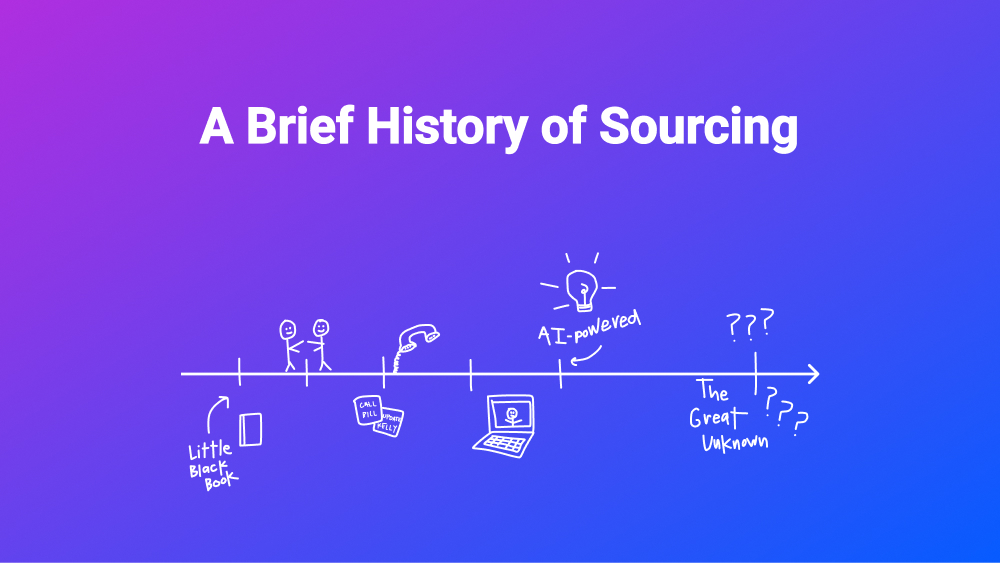In life, making the right decisions will contribute significantly to your success. You want to pick the right career, the right schools, and even the right people to surround you. In the business and recruitment world, things are not any different. Every choice you make should be precise and well thought out, including the candidates you choose for your clients and your organization. This desire to know if you are making the right choice is where a Talent Matching Platform comes in.
Hiring the best candidate who is the perfect fit for a specific position and company can be challenging. There is an infinite number of candidates to choose from, and finding them is like finding a needle in a haystack. But with the evolution of technology, different ways of finding the right candidate are emerging.In the search for the perfect candidate, you have probably tried Applicant Tracking Systems (ATS) to collect and sort and organize thousands of resumes, but you still have to interview the applicants one by one to make sure they are a good fit. You may have also tried Customer Relationship Management (CRM) to recruit and maintain a relationship with your candidates and manage your talent pipelines. Still, the amount of time and money it takes to find the perfect candidate is immense. It's common to use several different sourcing methods to find ideal candidates. The goal is to stop spending hours upon hours sifting through hundreds of resumes. Talent Matching Platforms are designed for this. It helps you parse through all the people in your database to recommend the top matches base on skills. A Talent Matching Platform incorporates augmentation, or algorithms, to parse through resumes and find the right people to engage.
Types of Algorithms and How They Work Sourcing Algorithms
Sourcing Algorithms help recruiters filter through resumes.All they need to do is to feed the software values for different parameters, including:
- Years of work experience
- Known programming languages
- Education
- Age
- Location
It will shortlist the candidates who do not match the required specifications. Once the process is over, the platform gives the recruiter a shortlist of the top match candidates for the specific job they are trying to fill. They do a round of manual checks and then enter those folks into a sequence to engage and screen them.
2. Filtering Algorithms
This type of algorithm is used after sourcing algorithms for further filtering. It uses a matching hypothesis and only sends the most qualified profiles to the recruiter. The algorithm analyzes necessary information on the resumes and deciphers the semantics used by extrapolating the turns of phrases and words. This allows the algorithm to delve deeper into the analysis of the candidate. It helps the recruiter analyze each candidate's personality through their resumes and provides more in-depth insight into each person. That algorithm repeats to find the candidate who is best suited to a company's working environment. However, It also determines how compatible the candidate and the supervisor are.
3. Matching Algorithms
They are used mainly by people looking for jobs. Applicants post their resumes, which are parsed through using predictive analysis to find the jobs that best correspond to the skills cited on their CVs. A candidate can then apply for the jobs that matched his resume.A matching algorithm can also send an applicant's resume to the companies they matched with, enhancing the hiring process.Advantages of Using Algorithms
1. They Ensure High-Quality Interviews
Algorithms provide information that is beyond what the candidates have put in their resumes. Moreover, the algorithm's data can give information about a candidate's personality and experience depending on their diction and technical keywords.Algorithms also identify issues with dates and location that a human eye might not, ensuring a better face-to-face interview and helps the recruiters prepare more focused questions for the applicants.
2. They Do Not Discriminate
A machine only analyzes data. This guarantees that everyone selected is qualified for the job based on their talents, skills, or years of experience.
3. They Offer a Range of Possibilities
Subsequently, the Matching Algorithm has proven to be very beneficial for both the applicants and the recruiters. It analyzes the applicant's resume at a deeper level, therefore, proposing jobs they otherwise wouldn't have considered.Ultimately, it selects the best candidates for a specific working environment that you would not have found otherwise. may have otherwise rejected.
4. They Ensure Better Responses
Speed is essential for any fast-growing company. A second wasted might make a company lose the chance of employing the best candidates.Algorithms are fast and accurate. It processes hundreds of resumes to perfection in seconds. At the same time, it reduces the chances of error by reprocessing the CVs.A Talent Matching Platform is essential in recruiting employees. For your company to be ahead of its competitors, you should employ the most advanced hiring technique: a Talent Matching Platform.
However, At Loxo, we provide the best talent matching platform that combines deep AI learning.
"They have the most incredible customer service and engineering teams I've ever encountered. Loxo isn't your average software company - this is a highly flexible group of innovators that evolve their product and features as the Recruiting industry changes." Says Anthony Maggio of Three Pillars.
Become a hiring machine
Ready to see for yourself how Loxo can transform your recruitment workflow and make you more efficient than ever before? We thought you might be.




